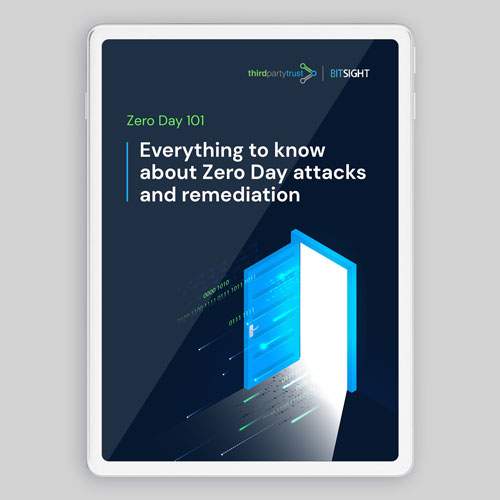What is a Vendor Risk Assessment?
You may know that as part of a vendor risk management program, you need to perform risk assessments of potential new vendors in order to identify and evaluate the potential risks of working with them.
A vendor risk assessment is a questionnaire that organizations use to assess and vet their current and future vendors. It evaluates the vendor’s security controls, policies, procedures, and other contributing factors to their overall security posture. With this information, companies are able to determine if the service provided outweighs the risks of working with a third party vendor.
When you perform a third party vendor risk assessment, you determine the most likely effects of uncertain events, and then identify, measure, and prioritize them. These risks may include the accuracy and reliability of operational, customer, and financial information; security breaches, operations effectiveness; and legal and regulatory compliance.
So, how to perform a vendor risk assessment? Below are 5 tips to help you get started.
3 Tips to Conduct A Vendor Risk Assessment
1. Start your Due Diligence process
This involves collecting and validating information from and about the third party vendor, retrieved from internal and external sources. In addition to using publicly available data, such as privacy policies or data breach history, you can also ask them to fulfil security questionnaires such as SIG Core and Lite, CAIQ, or CIS Controls; request industry certifications and attestations such as SOC reports, ISO compliance, or pentests; and any custom questions or assurances you deem necessary.
Read More: Vendor Risk Management: 7 Questions for Your Next Assessment
2. Assess and classify the risk
Choose which specific risks you want to track in your assessments, according to your organization and your vendor risk management goals, as well as your risk appetite. These categories can include strategic, cybersecurity, financial, compliance, geographic, operational, reputational, or privacy risk, among others.
Now that you know where you want to focus, develop your assessment criteria depending on what type of business relationship your organization will have with the vendor. One size does not fit all, and it wouldn’t be fair to subject low risk vendors to the same set of questions and requirements than high risk vendors.
Read More: Building Requirements for a Customized Security Risk Assessment
For example, a payroll provider deals with sensitive data, so it would make sense to prioritize data privacy when assessing them. On the other hand, a cloud hosting provider could have a great impact on your operations and business continuity if you’re selling SaaS.
The data you gather will provide you with the full picture on a vendor’s security posture. What controls, policies, and procedures do they have in place? What regulations do they comply with? How would they respond should an incident occur? How can you mitigate or reduce their inherent risk effectively?
Contrast the data with your risk standards to determine whether your organization feels comfortable with signing a contract or not.
You might be wondering: How to translate all this information you’ve collected into actionable insights to make a decision? Enter scores to quantify risk.
Risk scoring is the process of giving a value to the level of risk a third party represents. The total risk score and classification model is built on multiple criteria that you can customize according to your standards. This will help you define a threshold and ultimately stick with vendors who are above it.
3. Move on to vendor onboarding
If a vendor didn’t meet your standards, you can raise a finding and request for additional assurances until you are comfortable with the evidence provided.
Once a vendor is approved, you can start the onboarding and contract management process, which is basically defining written agreements to guarantee a certain level of security is maintained, while negotiating contractual risk controls and measurements. Usually, the Legal and Procurement teams help by adding language and specific conditions that the vendor needs to meet.
Read More: How to Get Legal, Procurement, and Business Units Onboard with Security
4. Reassess your vendors continuously
Your critical insights may initially come from the first ‘point in time’ risk assessment and due diligence. After that, you need to perform continuous monitoring of the controls in place and the changes in the relationship with the third party vendor, including periodic reassessments, ongoing monitoring for security vectors, incident notification, and on/offboarding.
Anything can happen after you sign the contract: a pandemic forcing everyone to work from home, or a zero-day vulnerability potentially exposing your network -Think Kaseya, SolarWinds, or Colonial Pipeline.
The continuous monitoring approach is much more effective than doing annual assessments, which over time yields less insight and are static in nature, while expensive to perform.
5. Automate your vendor risk assessment process
Like any repeatable process, third party risk assessments can be automated to increase efficiency and cut down on repetitive tasks. Review your internal procedures and workflows to identify tasks that can be done automatically, such as auto-flagging risks, alerting of due dates in security documentation, and triggering reassessments.
Automation presents as the solution to an otherwise manual, painful, and repetitive process to assess and remediate vendor risk.
How to streamline your vendor risk assessment process?
A dedicated tool like the ThirdPartyTrust automation platform allows you to easily set up your assessment criteria, onboard new vendors involving as many stakeholders as needed, and automate your evaluation and reassessments. All while providing deep insights into third party risk and continuously monitoring vendor security performance based on your risk standards.
Watch how easy it is to automate your end-to-end vendor risk management program with ThirdPartyTrust:
Vendor risk assessment is not the place to cut corners. A thorough evaluation could save you from working with a third party that is unstable or fails to comply with your standards.
In an always changing environment, full of threats and emerging risks, third party risk management is of great importance to maintain a secure vendor ecosystem and protect your data integrity, as well as that of your customers.
Are you ready to get started with vendor risk management? Let us show you how ThirdPartyTrust can help. Talk to an expert today.

Don’t let zero days be “wake up calls.”
Unpredictable vulnerabilities will be an ongoing concern for security teams inthe foreseeable future.
In this guide you will learn the fundamentals of zero days, patterns from our statistical analysis, and tips to reduce risk and remediate zero days if/when they happen.




